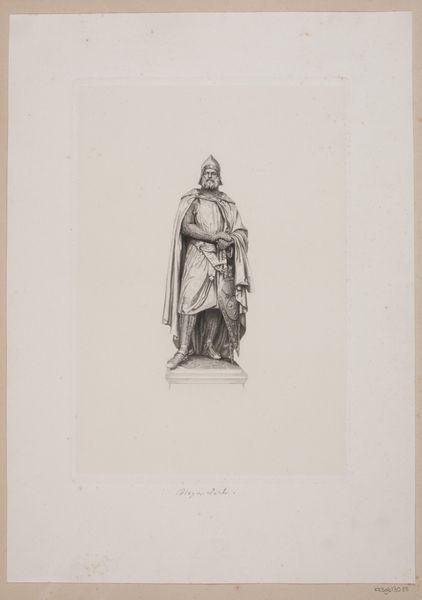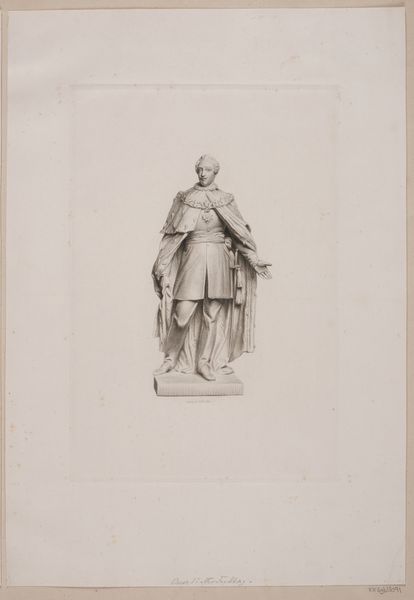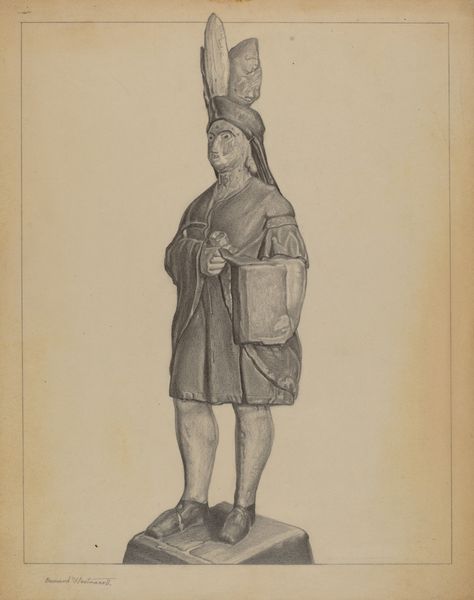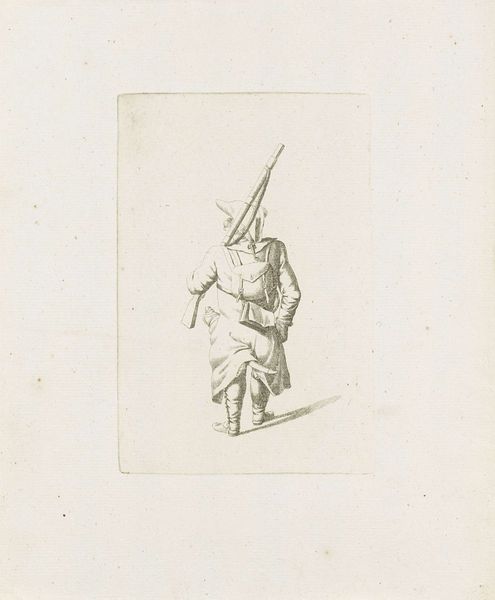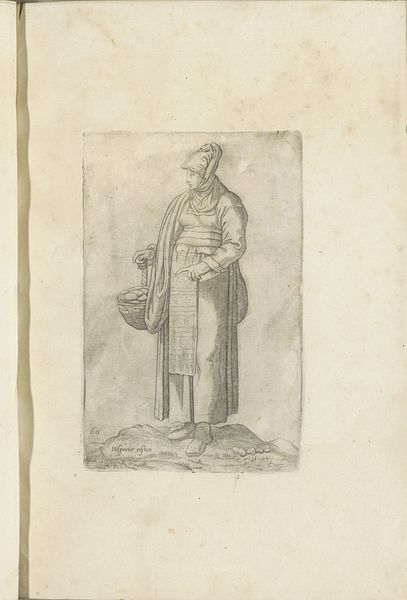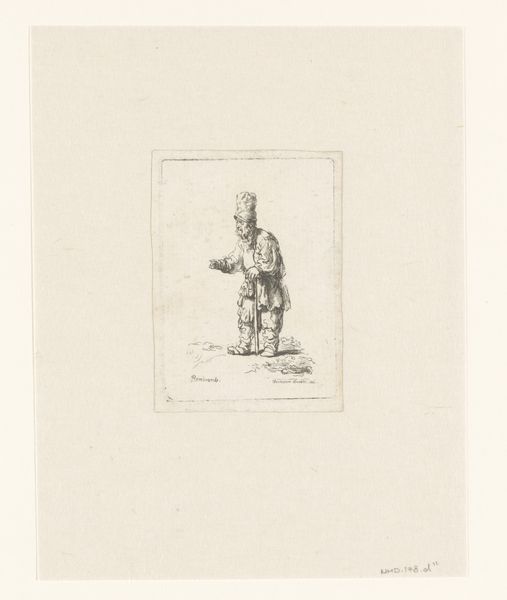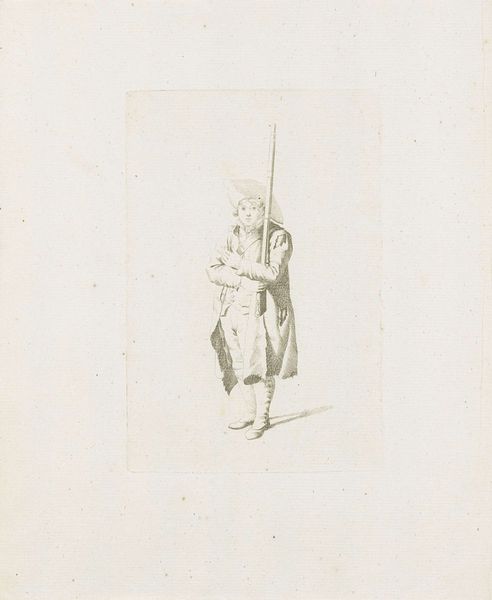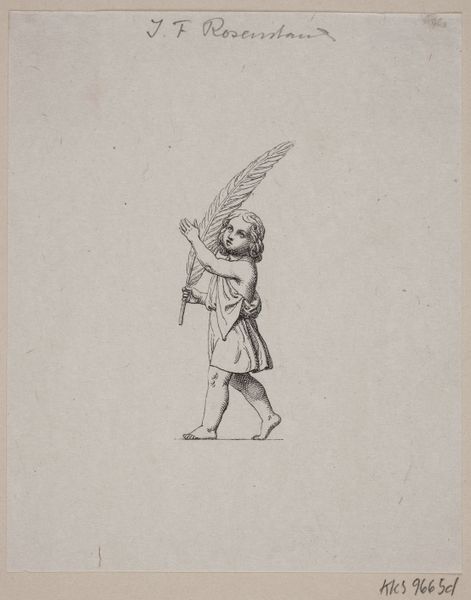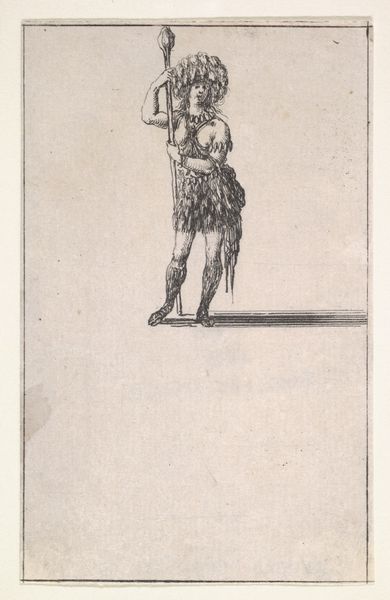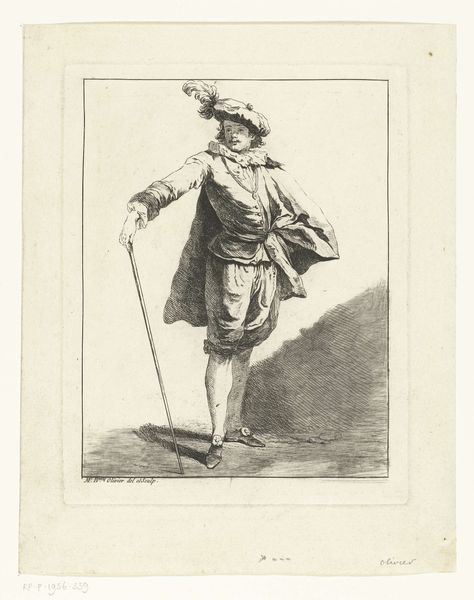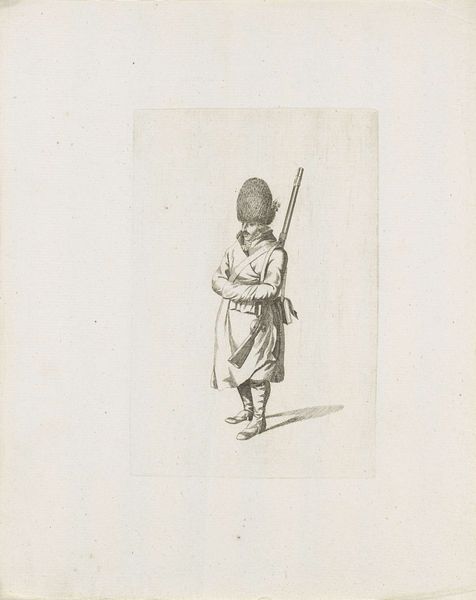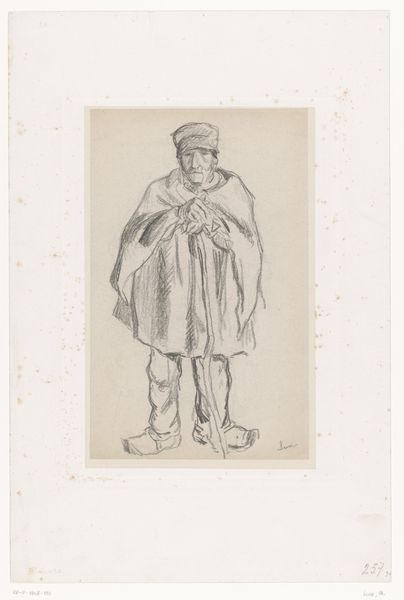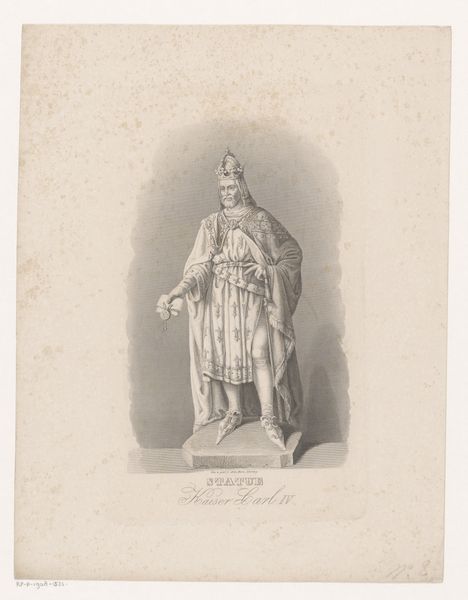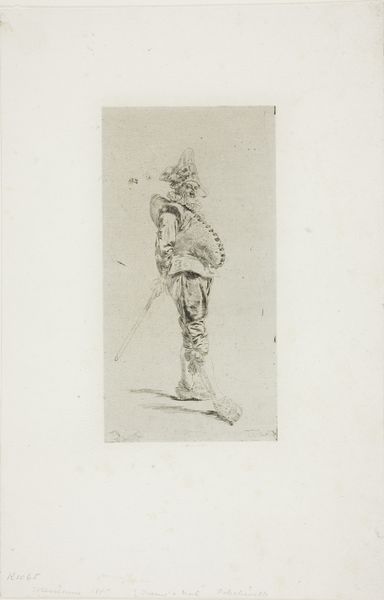
print, graphite, engraving
#
portrait
#
neoclacissism
# print
#
graphite
#
history-painting
#
engraving
Dimensions: 312 mm (height) x 206 mm (width) (plademaal)
Editor: Here we have Joel Ballin’s “Odin,” an engraving printed sometime between 1822 and 1885. It’s stark, almost feels like an archaeologist’s record. How do we place a work like this within a broader artistic or historical context? Curator: Precisely. Let's consider the sociopolitical climate in which Ballin created this print. The 19th century witnessed a surge of nationalism across Europe, driving interest in national mythologies and origins. How does this image of Odin, rendered in a neoclassical style, speak to that cultural moment? Is Ballin presenting Odin as a god, or a cultural progenitor? Editor: The Neoclassical style gives him a very Roman feel, like a Caesar with a really impressive beard. But he’s also holding what looks like a club, and that horned helmet isn’t very Roman. Does that tension matter? Curator: It does. Neoclassicism, with its emphasis on order and reason, often served as a visual language for establishing authority. Ballin's choice of this style suggests an attempt to legitimize Norse mythology within the established artistic and intellectual framework. What implications arise when you see Norse mythology being visualized through such an explicitly Classicizing lens? Editor: So, he’s borrowing artistic language from the Romans to ennoble a Norse subject. It’s like he’s saying, "These gods are serious; worthy of the same artistic treatment as classical heroes." But, does that make it… propaganda? Curator: Potentially. Consider how prints like these circulated in 19th-century society. Who had access to them? Where were they displayed? Prints could function as tools for disseminating particular ideologies about national identity and cultural heritage to a broader public. They made the gods visible and reproducible, which made their values more influential. Editor: I hadn’t thought about Odin having that kind of public role. I guess art really is never just *art*, is it? Curator: Never just *art*. It is, often, an object within political culture.
Comments
No comments
Be the first to comment and join the conversation on the ultimate creative platform.
